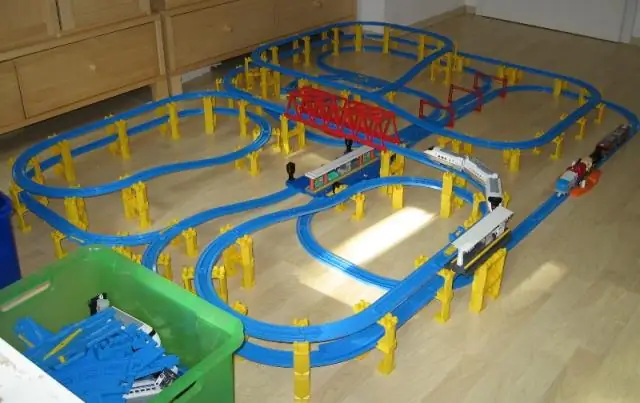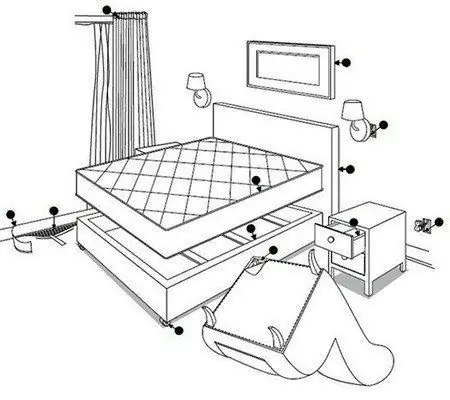
Table of contents:
- Author Bailey Albertson [email protected].
- Public 2023-12-17 12:53.
- Last modified 2025-06-01 07:32.
Condensation on the toilet cistern: causes and remedies

A toilet cistern covered with droplets of moisture is a common occurrence that many of us have encountered. This not only looks unaesthetic, but also causes significant damage to your plumbing and the space around it. Why does condensation form, what are the reasons for its appearance and how to get rid of it once and for all? Let's consider everything in order.
Content
- 1 Reasons for the formation of condensation on the toilet cistern
- 2 What are the consequences of this trouble
-
3 How to troubleshoot the problem
- 3.1 Repairing the cistern system
- 3.2 Minimizing water discharge
- 3.3 Lowering the humidity in the bathroom
- 3.4 Increasing water temperature
- 3.5 Double-walled cisterns
- 3.6 Creation of internal thermal insulation
- 3.7 Video about thermal insulation of a container with your own hands
- 3.8 Checking the ventilation system, troubleshooting
Reasons for the formation of condensation on the toilet cistern
The main reason for the formation of condensation is the large temperature difference in the drain tank and in the room air. Usually, the walls of the cistern are not made too thick; they cool quickly when cold water enters. If the temperature difference is 10-15 degrees, condensation will definitely appear.

Condensation on the toilet cistern
Considering this issue from the point of view of physics, one can compare the formation of condensation with the appearance of dew on the grass. Moist warm air, in contact with the cold surface of the tank, cools down and ceases to retain the moisture that is in it. This moisture deposited on the surface is condensation.
It may also appear for the following reasons:
- the presence of hot heating pipes in the bathroom;
- high humidity in the bathroom or bathroom;
- faulty toilet cistern flush device (while water from the cistern constantly flows into the sewer, its deficiency is replenished with cold water);
- frequent use of the toilet, in which the water inside the tank does not have time to warm up to room temperature.
Before you start dealing with condensation, you need to find out the exact cause of its occurrence.
What are the consequences of this trouble
In addition to the fact that the toilet cistern is constantly wet and cold due to condensation, this excess moisture can bring a lot of trouble. Dampness leads to deterioration of equipment, which looks unaesthetic due to stains. The fastening bolts slowly but surely rust, and brown streaks form around them.
Over time, moisture, flowing down from the toilet cistern, collects in puddles, penetrates under the floor covering. From there, it can flow even lower and damage the thermal insulation, or even make its way to the ceiling of your neighbors from below.
How to troubleshoot the problem
What to do if condensation accumulates on the toilet cistern? There are several ways to deal with this problem.
Cistern system repair
Condensation often occurs during the warm season. This problem will bring a lot of trouble if the waste tank is faulty. For example, the inlet fittings have broken or the gasket in the drain system is out of order. In both cases, water will begin to continuously drain from the tank into the sewer. In its place, cold water will flow from the pipeline. And as a result, condensation will settle on the walls of the tank.

Monitor the operation of the toilet cistern drain system, repair it if necessary
Check the operation of the drain device. If it leaks, it will be visible on the footprints in the toilet and heard by the sound of pouring water. If a malfunction is found, repair the drain system or replace it completely.
Minimizing water drain
In this case, you will have to reduce the frequency of using the toilet. With frequent draining of water, condensation forms according to the same principle as in case of malfunctions in the drain tank. The new water entering the inside will not have time to warm up, and the moisture will settle on the surface.
In order to reduce the drainage of water, you can use two methods.
Many modern flush cisterns have a button with a minimum flush function. Be sure to use it.

Use the half flush button on the toilet
If there is no such button on your cistern, reduce the pressure of the incoming water by adjusting the flow with the tap.
Reducing humidity in the bathroom
Reduce the humidity in the bathroom or toilet. Condensation cannot form in a room where there is no evaporation of water. Of course, you cannot reduce the humidity by 100%. In addition, natural or mechanical ventilation will not help here. But the installation of special air dryers will help to partially solve the problem.

Install a dehumidifier to reduce humidity
Increase in water temperature
To do this, use central heating pipes. It is very good if they pass next to the cistern. Extend the flexible hose to the tank and route it so that it fits snugly against the hot pipe, wrap it around it several times.
You can also arrange a real heat exchanger. Take a copper tube of the required diameter, thread it onto a heating riser or pipe for 4-6 turns and mount it in the gap in the line to the tank. Pack the resulting coil in mineral wool, ensuring thermal insulation. This design can heat the water entering the tank by more than 5 degrees, thereby eliminating the formation of condensation.
Of course, this method has its drawbacks. Firstly, it is quite time consuming, and secondly, in the summer it will not be possible to use the heat of the heating pipes.
In extreme cases, you can simply connect not cold, but warm water to the tank.
Double-walled cisterns
Of course, manufacturers of modern toilet bowls are familiar with the problem of condensation and its consequences. Therefore, they are looking for effective solutions and offer new models with a cistern design that will not let the toilet "cry".
This model has an additional plastic container inside the tank. Its walls do not come into contact with the ceramic surface. Thus, the temperature of the latter is always equal to room temperature. This design uniquely solves the problem of condensation.
Unfortunately, these models of toilet bowls are expensive and not always affordable for ordinary customers.
Creation of internal thermal insulation
Some self-taught craftsmen try to insulate the walls of the tank from contact with cold water using thermal insulating materials, for example, foil, foam, etc. They can simply be glued to the inside of the container.

Thermal insulation of the toilet cistern from the inside with foil
DIY video about thermal insulation of a container
youtube.com/watch?v=p8iH0UvDCOg
Checking the ventilation system, troubleshooting
Do not try to cover the ventilation holes in the bathroom with any materials: this often leads to the fact that the ventilation stops working. It is better to purchase a special ventilation grill for this.
Remember to check your cravings regularly. If the ventilation ducts are clogged with debris (which may have appeared during the construction of the house), then it may not be at all. In this case, you need to try to clean the channels yourself or call a specialist from the servicing housing maintenance company.

Checking the draft in the ventilation hole with a piece of paper
You can also leave the toilet or bathroom door open, but this is not always possible. Make a small gap under the door, this is enough for constant air circulation.
If this does not help, install forced ventilation. It is especially useful if you have a combined bathroom in your house. Indeed, after taking a bath or shower, all surfaces around are covered with moisture. This can cause condensation to form.
If the ventilation ducts are clean and there is good draft, then you can install the fan in the ventilation hole yourself. But it is better to turn to professionals who will calculate the required power of the device for a particular room.
By the way, replacing ordinary windows with plastic ones can also cause condensation. Plastic windows are airtight, they can disrupt the ventilation of the apartment up to the cessation of air exchange. Any moisture that evaporates in the apartment will remain in the air and eventually settle as condensation on the surface, including the drain tank. To avoid this, when ordering plastic windows, do not forget about ventilation window valves.
It would seem that the problem of condensation on the toilet cistern is complex and almost insoluble, if you rely only on your own strength. But as you can see, everything is much simpler. You can easily cope with condensation on your own if you find the reason and choose the right method. Good luck and comfort to your home!
Recommended:
Wooden Toilet For A Summer Residence With Your Own Hands - Step By Step Instructions With Photos, Drawings And Video

Why is wood a suitable material for building a toilet in the country? What is needed to create such a latrine, and how do you proceed? Let's figure it out
Fleas In The Apartment: Where And How To Get Rid Of Their Appearance In The House Quickly And Efficiently Using Dichlorvos, Wormwood And Other Means + Video

Where do fleas come from in a house or apartment and how to determine their presence. Effective ways to help get rid of parasites quickly
How To Install A Toilet With Your Own Hands - Step-by-step Instructions For Installing And Connecting To The Sewer With Video

Classification of toilets according to different criteria. The choice of the toilet, installation features depending on the type of construction. Installation errors and how to fix them
How To Get Rid Of The Smell Of Cigarettes And Tobacco In An Apartment + Video And Reviews

How to get rid of the smell of tobacco in an apartment: effective ways to disguise and destroy cigarette smoke stuck in things and furniture. Devices to help. Reviews
What Home Bugs Appear From, How To Get Rid Of Them (folk Remedies, Etc.), How They Look, Video

Means of dealing with domestic bugs - folk, chemical, technical. Tips for the prevention of bedbugs. What do bed bugs look like at different stages of development
